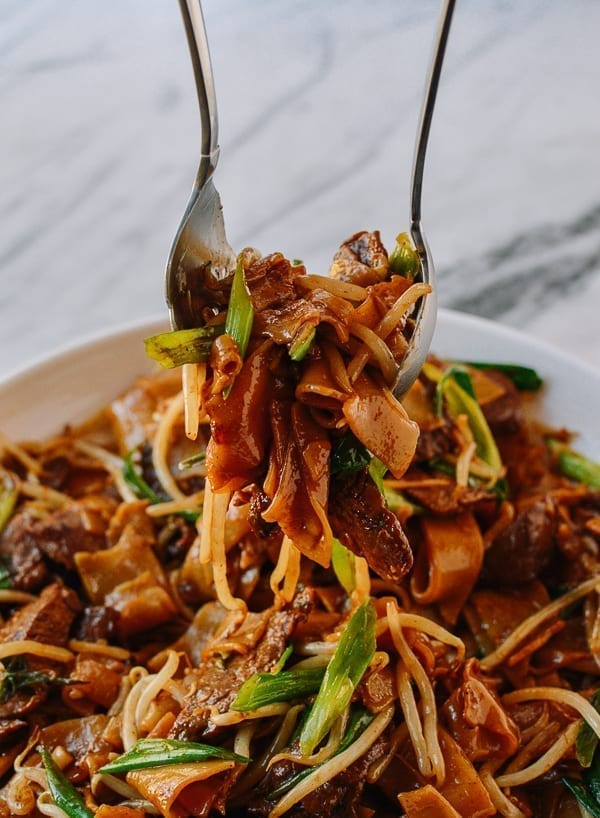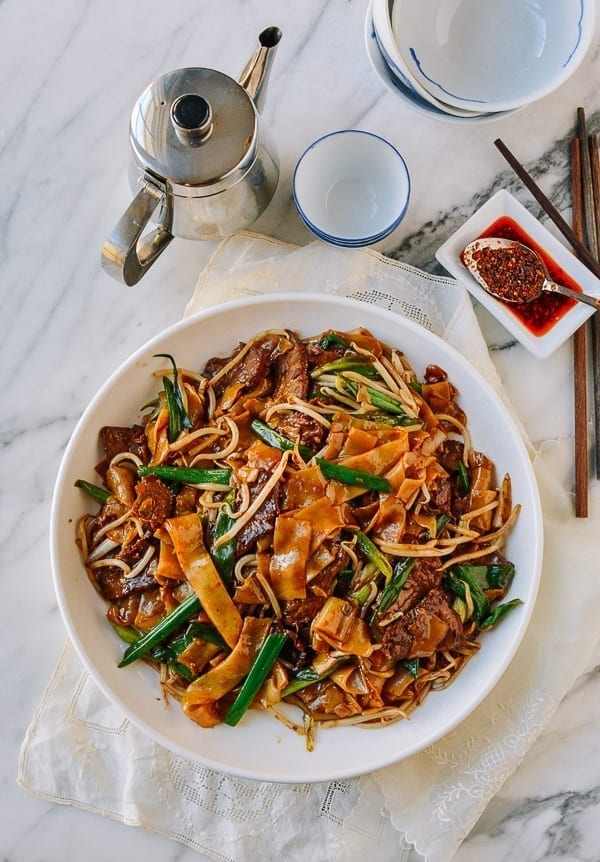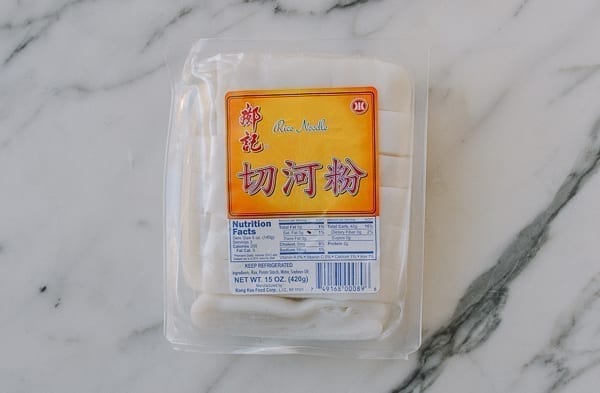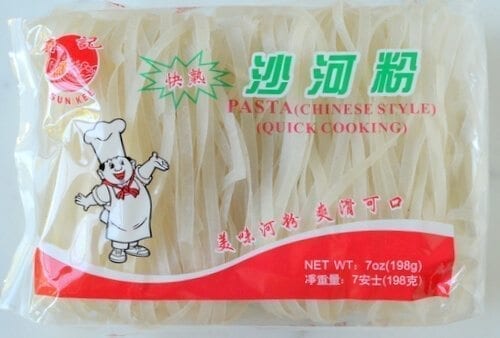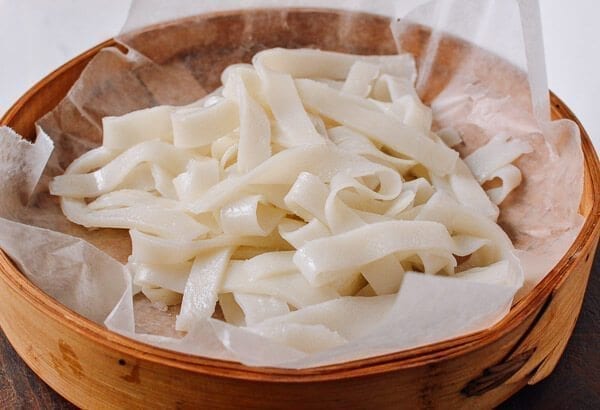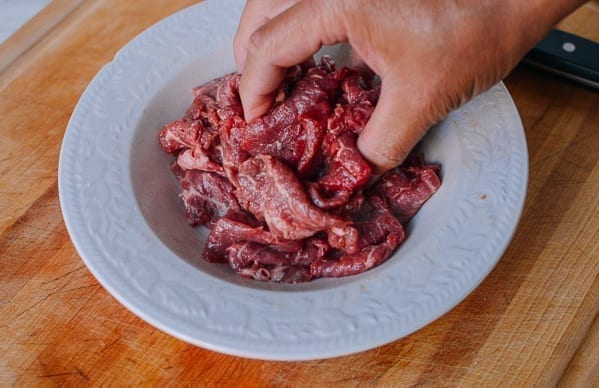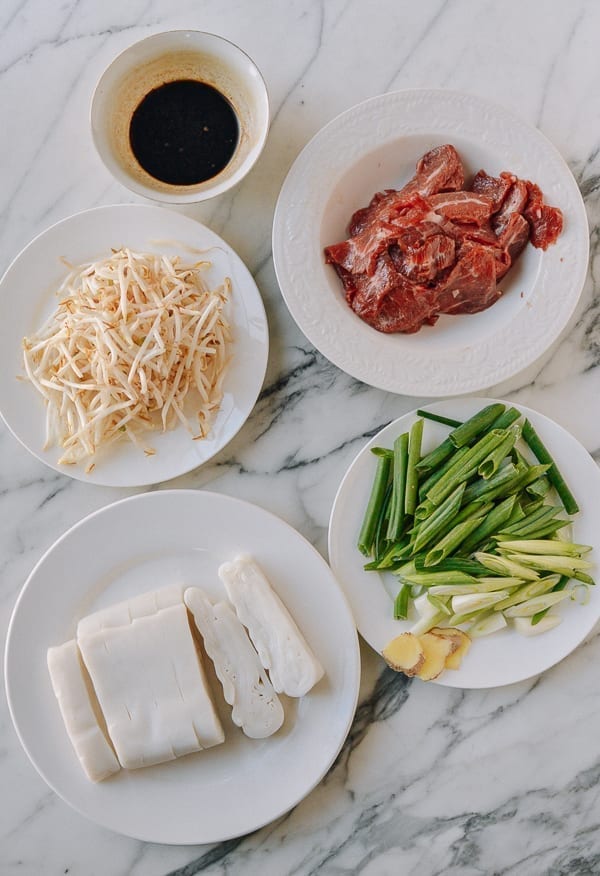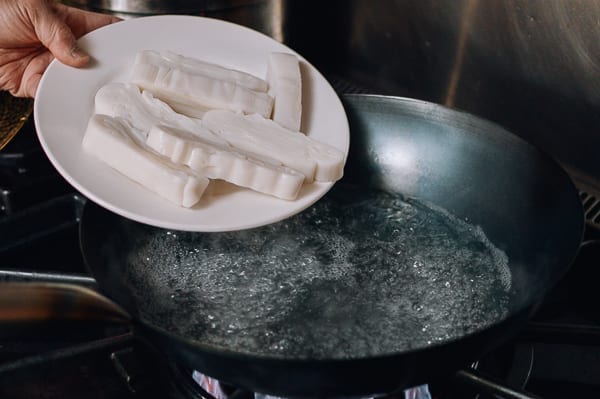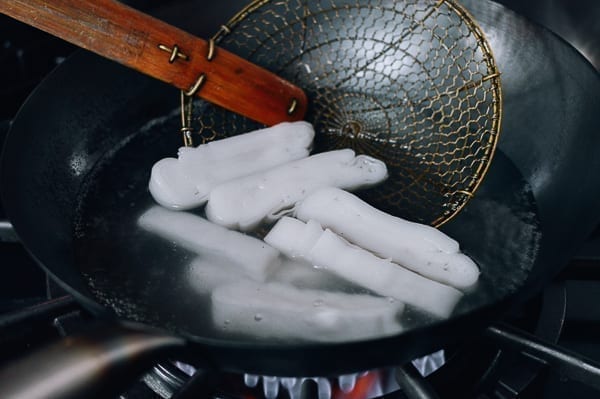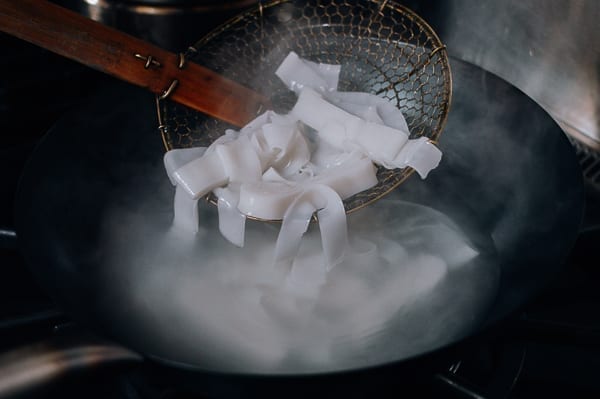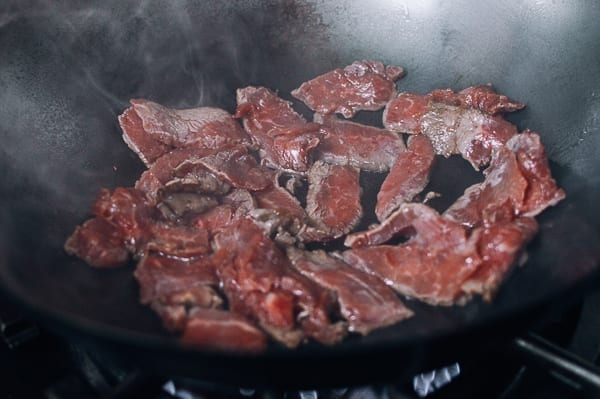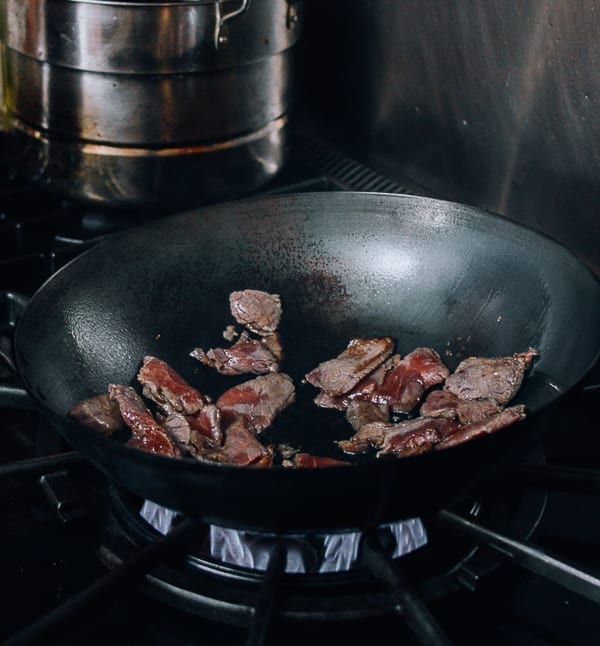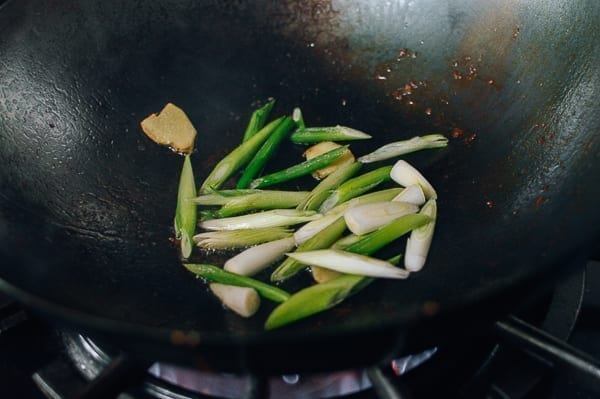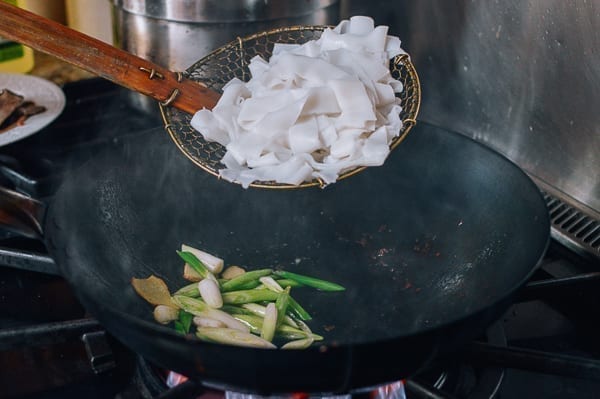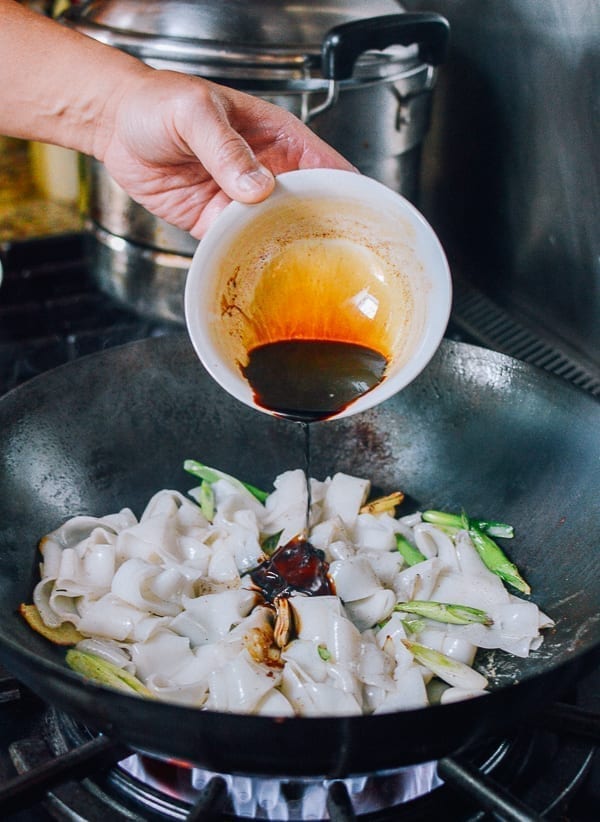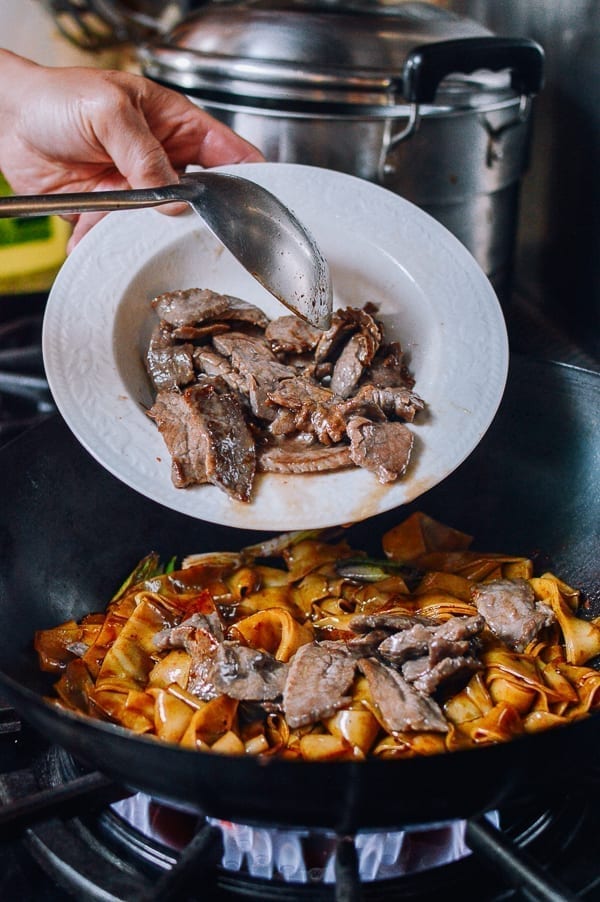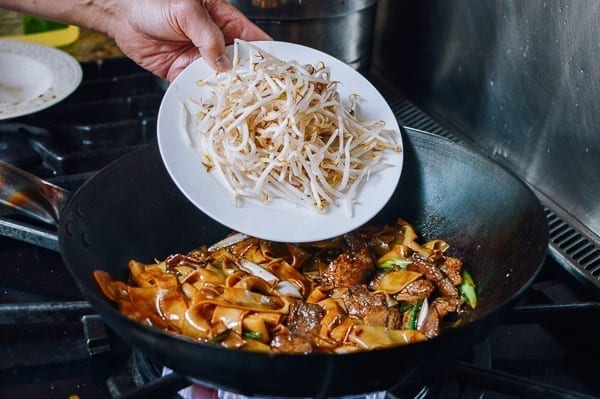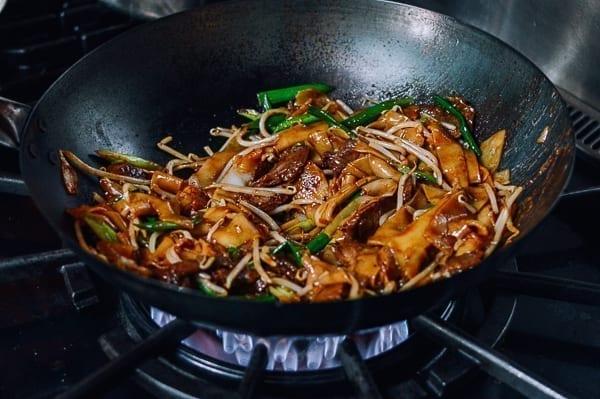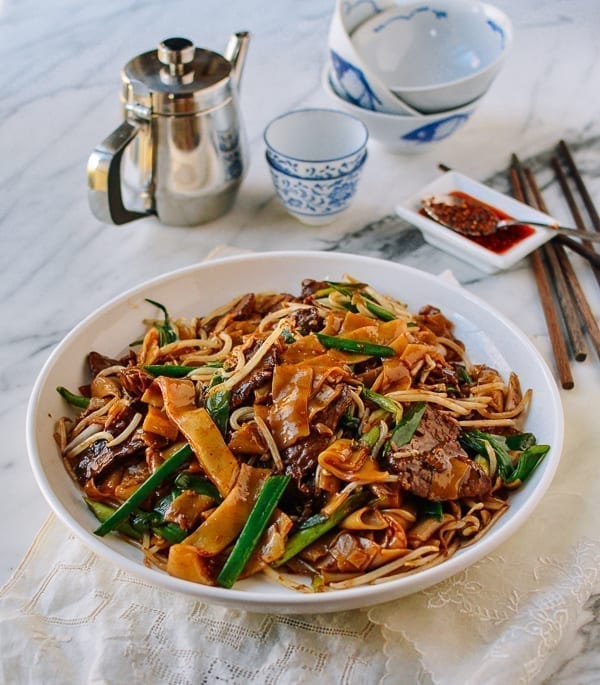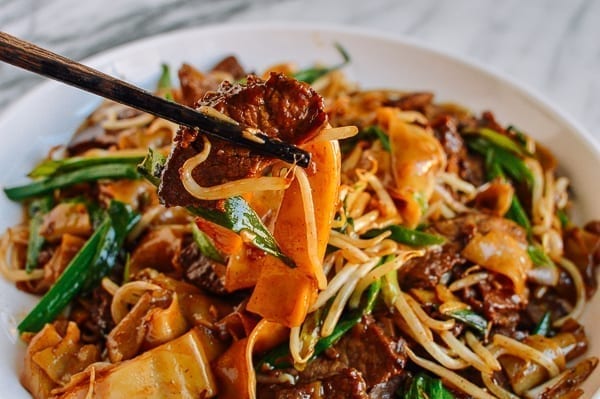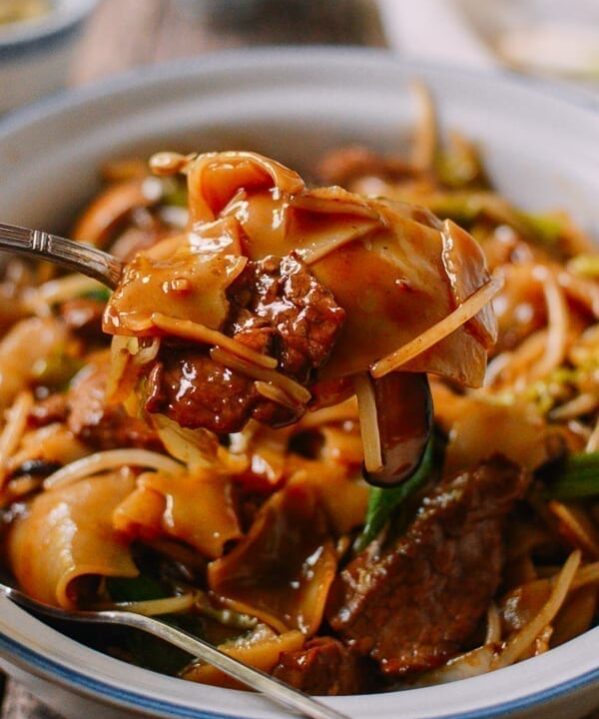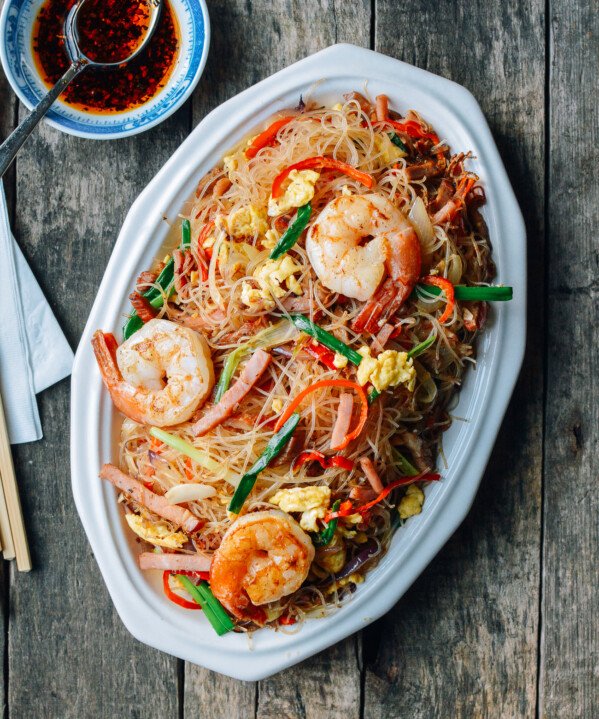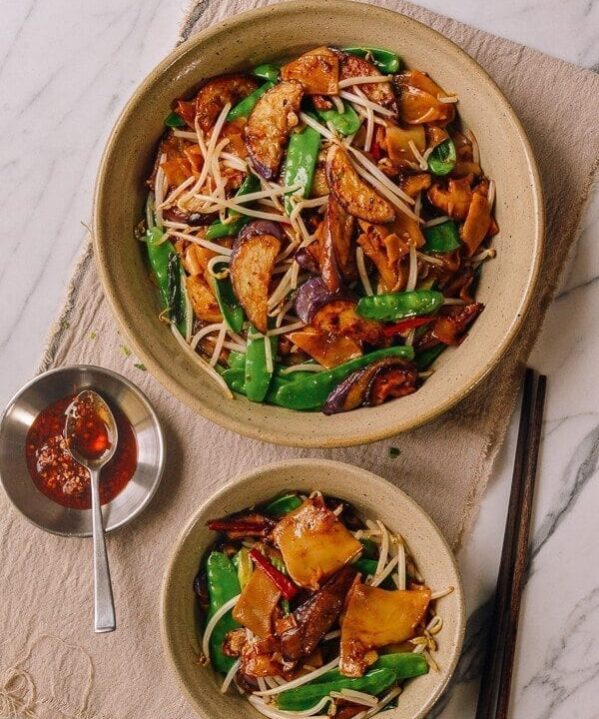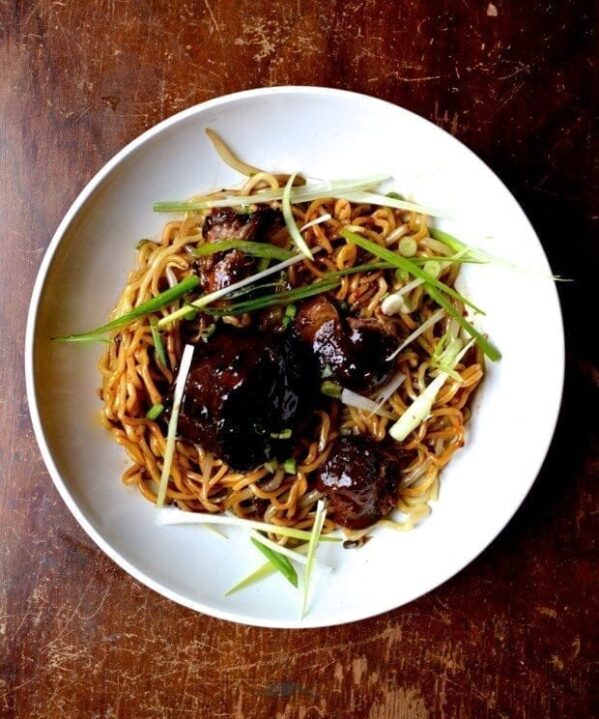Beef chow fun is a sleeping favorite among Chinese food lovers. The problem is, the traditional version isn’t widely available, and there aren’t many good recipes out there (until now!).
What Is Beef Chow Fun?
Beef chow fun is a Cantonese dish made from stir-frying beef, wide rice noodles (he fen or huo fun), scallions, ginger, bean sprouts and dark soy sauce.
Known as gon chow ngau huo in Cantonese, you can find it in dim sum restaurants or sometimes Cantonese roast meat places.
Wok Hei & Pow Wok
An important element in beef chow fun is “wok hei” (鑊氣). Wok hei refers to the “breath of the wok” when cooking over very high heat, and the unique umami flavor that results.
You can see examples of old-fashioned high flames in our Xi’An street food post, where street vendors cooked over roaring hot fires. Wok hei is not easy to achieve using a home range burner, but it can be done.
The other essential technique in this dish is “pow wok,” a method of tossing the contents of a wok without a spatula.
It’s best practiced with a seasoned pow wok with a wooden handle for easy gripping. You may have seen something like it in any local takeout place with an open kitchen.
For this dish, the continuous movement of the noodles in the hot wok prevents sticking and keeps the rice noodles whole. But don’t despair, I have cooked this dish with a metal spatula and it has turned out just fine. What’s a few broken noodles here or there anyway?
We’ve written the recipe as if you’re using a spatula, but go for the “pow wok” tossing method if you’re brave enough!
The Pow Wok Technique – The Woks of Life from The Woks of Life on Vimeo.
Check out our Chinese Cooking tools page for more information on carbon steel woks and other tools we use in our recipes and daily cooking!
Buying Rice Noodles
While all this may sound daunting, it’s actually pretty easy to get a good Beef Chow Fun on the table at home if you can get fresh rice noodles at your local Asian market.
It is not the easiest item to find, but all you need to do is ask your local Asian grocer, and they will point you to the right aisle to get the fresh variety.
You can also substitute dried rice noodles, similar to what you would use for pad Thai.
Judy has also published her recipe for Homemade Rice Noodles. Give it a try, and you can make your own any time!
Ok, on to the recipe!
Beef Chow Fun: Recipe Instructions
Start by combining 8 oz. sliced flank steak, 1/4 teaspoon baking soda, 1 teaspoon cornstarch, 1 teaspoon soy sauce, 1 teaspoon vegetable oil. Marinate for 1 hour.
The baking soda tenderizes the meat to achieve a texture similar to what you get in restaurants. The longer you marinate the beef, the more tender it gets.
(Learn more about preparing and tenderizing beef for stir-fry in our article dedicated to the subject!) Another useful tip: freeze the beef before slicing until firm but not solid. This makes slicing the beef much easier!
Also prepare the rest of the ingredients and have them ready before you cook.
Some fresh rice noodles come as large sheets, while others come pre-cut. If you have the sheets, slice the rice noodles so they’re about 1 inch wide. If the rice noodles are very stiff and stuck together, you will have to blanch them to loosen them.
Simply bring a wok full of water to a boil, and add the noodles.
Blanch them for 30 seconds or so. You’ll see them loosen into longer strands of noodles.
Remove from the wok and transfer to an ice bath. Drain.
Heat your wok over high heat until smoking, and add 1 1/2 tablespoons vegetable oil to coat the wok. Add the beef and sear until browned.
As long as your wok is hot enough, the meat shouldn’t stick. Remove from the wok and set aside.
Add another 1 1/2 tablespoons vegetable oil to the wok along with the ginger. Let it infuse the oil with its rich flavor for about 15 seconds, and then add the scallions.
Spread the fresh rice noodles evenly in the wok and stir-fry for 15 seconds.
Add 2 tablespoons of Shaoxing wine around the rim of the wok.
Next, add 1/2 teaspoons sesame oil, 2 teaspoons dark soy sauce, 2 tablespoons regular soy sauce, pinch of sugar, along with the beef.
Stir fry, making sure your metal wok spatula scrapes the bottom of the wok. Lift the huo fun in an upward motion to mix well and coat evenly with the soy sauce.
Add a bit of salt and white pepper to taste (taste the noodles before adding salt).
If the rice noodles were cold when you started, you may have to toss the noodles longer to heat them through properly. If the rice noodles were fresh/at room temperature or blanched, less time will be required. Your heat should remain as high as possible at all times. That is the key to achieving wok hei.
Add the bean sprouts and stir-fry until they are just tender.
Serve your Beef Chow Fun Noodles piping hot. It’s also great with a little homemade chili oil or chiu chow chili sauce on the side!
Beef Chow Fun
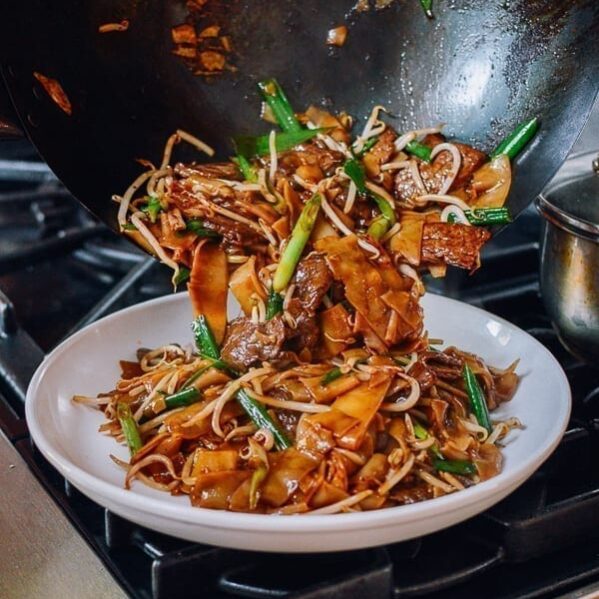
Ingredients
For the beef & marinade:
- 8 oz. flank steak (225g, sliced into 1/8 thick pieces)
- 1/4 teaspoon baking soda (optional)
- 1 teaspoon cornstarch
- 1 teaspoon soy sauce
- 1 teaspoon vegetable oil
For the rest of the dish:
- 12 oz. fresh wide rice noodles
- 3 tablespoons vegetable oil
- 4 scallions (split in half vertically and cut into 3-inch pieces)
- 3 thin slices ginger
- 2 tablespoons Shaoxing wine
- 1/2 teaspoon sesame oil
- 2 teaspoons dark soy sauce
- 2 tablespoons regular soy sauce
- 1/8 teaspoon sugar
- salt and white pepper (to taste)
- 4 to 6 ounces fresh mung bean sprouts
Instructions
- Combine the beef and marinade ingredients and marinate for about 1 hour.
- Some fresh rice noodles come as large sheets, while others are already cut. If you have the sheets, slice the rice noodles so they're about 1 inch wide. If the noodles are very stiff and stuck together, bring a wok full of water to a boil, and add the noodles. Blanch them for 30 seconds to loosen. Transfer to an ice bath and drain thoroughly.
- Heat your wok over high heat until smoking, and add 1 1/2 tablespoons oil to coat the wok. Add the beef and sear until browned. As long as your wok is hot enough, the meat shouldn't stick. Set aside. Add 1 1/2 tablespoons more vegetable oil to the wok. Add the ginger to infuse the oil with its rich flavor for about 15 seconds. Add the scallions.
- Spread the noodles evenly in the wok and stir-fry on high for about 15 seconds. Add the Shaoxing wine around the perimeter of the wok.
- Next, add the sesame oil, soy sauces, pinch of sugar and the seared beef. Stir-fry, making sure your metal wok spatula scrapes the bottom of the wok. Lift the noodles in an upward motion to mix well and coat them evenly with the sauce.
- Add a bit of salt and white pepper to taste (taste the noodles before adding salt). Add the bean sprouts and stir-fry until they are just tender. Serve!
Tips & Notes:
nutrition facts
Note: We originally published this post on June 12, 2014. We’ve updated it with new photos, clearer instructions, nutrition info, and more, though the original recipe remains the same. Enjoy!
